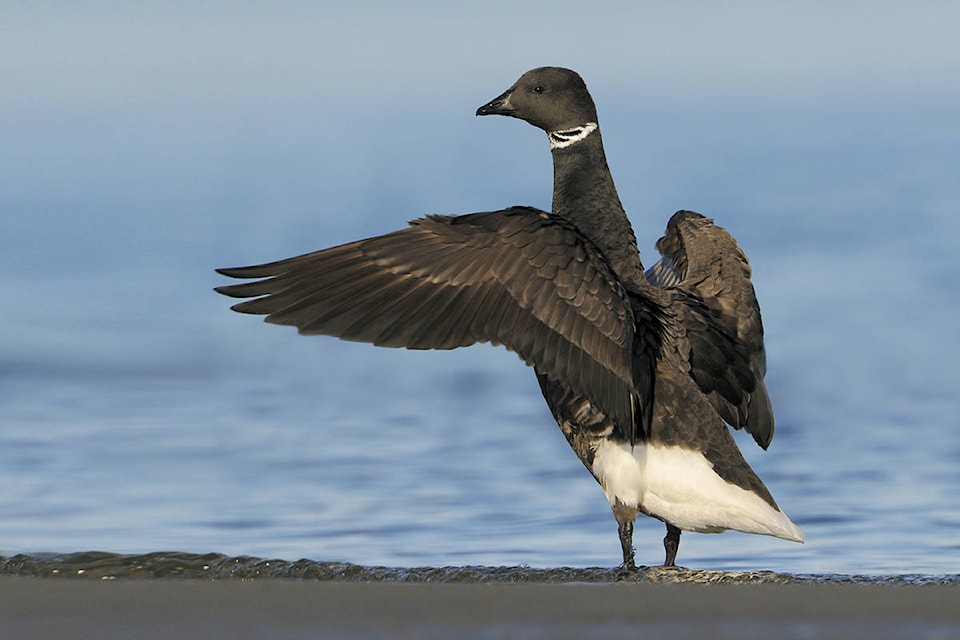BY SYLVIA CAMPBELL
The Brant is a small dark goose that is seen throughout much of the northern hemisphere. In contrast to other goose species, Brant are characterized by their extensive use of native coastal habitats outside the breeding season. Three to four subspecies are recognized mainly on the basis of plumage characteristics. The two/three North American subspecies are further separated into four subpopulations based on genetics, location of breeding and wintering areas, and migration routes.
SPONSORED: Brant Wildlife Festival shines spotlight on the mid-Island’s spaces
This goose breeds from the low to the high Arctic, and migrates long distances to wintering areas. Different subpopulations nesting in arctic Canada and Alaska winter in areas as widely separated as Baja, Calif., the Puget Sound, the coastline of the mid-Atlantic states, and Ireland. In summer, salt marshes are key habitats for nesting and raising young. These same habitats, along with large lakes with abundant moss and sedge shorelines, are also used during the flightless moult. Wintering locations are usually characterized by an abundance of native intertidal plants used as forage, particularly the seagrass, Zostera; no other species of goose relies so heavily on a single plant species during the non-breeding season. Like other geese, this species provides biparental care, accompanies its young through their first migration, and usually mates for life. Brant show fidelity to both wintering and breeding areas. In the low Arctic, brant often breed in relatively dense colonies, but in the high Arctic nesting is more dispersed. During brood-rearing, the availability and abundance of salt marsh foraging habitat directly affects growth and recruitment of goslings, thereby influencing local population dynamics. During winter, their strong dependence on certain food plants makes them vulnerable to occasional heavy losses from starvation, more so than most other geese. Further, oceanographic conditions experienced at wintering locations directly affect their subsequent breeding condition and reproductive performance. These vulnerabilities necessitate careful population monitoring and regulation of hunting.
Each year the North Island Wildlife Recovery Centre participants in the Brant Festival by inviting the public to view the release of an eagle. This year’s release is April 14 at 2 p.m. For more info, visit www.niwra.org.
Sylvia Campbell is a co-founder of the North Island Wildlife Recovery Centre. She can be reached at wildlife@niwra.org.
